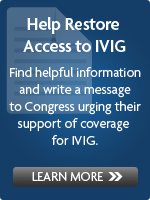

Letter Writing
Letter writing is an effective way to persuade legislators to support your position. State legislators receive an enormous amount of mail each day, so give careful thought to your letter. If you know the legislator, make that clear in the first paragraph. This will alert the person opening the mail to give the letter special attention. Write your letter on your business letterhead. Some legislators downgrade the importance of a letter if it is obviously part of a letter writing campaign. Therefore, avoid form letters. Mass-mailed postcards are a waste of your time and money. Make your letter as personal as possible.
Try to keep your letter to one page in length. Use your own words and cover only one issue per letter. In the first paragraph, ask for the action you want the legislator to take. Identify the legislation clearly by name and number. Chances are good that the legislator is aware of the political fallout of not voting for your issue, so do not mention it. Be certain your legislator receives the letter before a vote.
Thank legislators who support your positions and let legislators who do not know of your disapproval.
A Checklist for Letter Writing
- Letters should be on personal or business letterhead with a return address on both the letter and envelope.
- Each letter should be about only one piece of legislation and should identify the bill by its number and author. Make sure you tell the legislator how you want them to vote.
- Immediately reference the bill number, author, and action you want. Restate what you want in the last paragraph.
- Legislators discount pre-printed form letters, even if the wording is the same. Make sure you copy the letter on your own letterhead in your own handwriting.
- Stress how a particular issue would affect people in the legislator's district -- namely you. Try to keep your letter to one page, but bear in mind the reader may not be familiar with the subject matter.
- DO NOT include anything you would not want quoted on the evening news!
- Ask for a reply indicating the legislator's position.
- Use the proper form of address:
The Honorable John Smith
California State Senate
P.O. Box 942848
Sacramento, CA 94248
The Honorable John Smith
Capitol Complex
Arizona State Senate
1700 West Washington
Phoenix, AZ 85007-2890
The Honorable John Smith
California State Assembly
P.O. Box 942849
Sacramento, CA 94249
The Honorable John Smith
Capitol Complex
Arizona House of Representatives
1700 West Washington
Phoenix, AZ 85007-2890
Despite technological advances, letters and personal meetings remain the most effective means of communicating with elected officials. There are circumstances, however, when it may be appropriate to use e-mail. For example, if a committee is scheduled to take action on a piece of legislation tomorrow and your legislator is on that committee, then an e-mail or phone call would be the quickest way to communicate. Also, if you are pressed for time, an e-mail is better than no communication at all. Once you develop a relationship with a legislator’s office, you may find that staffers may prefer to communicate with you by e-mail when they are looking for input on health issues or scheduling a meeting.
If you choose to e-mail your elected officials follow the same rules you would if you were writing a regular letter. Include your return address and identify yourself as a constituent. To ensure that your e-mail is read, keep your message brief and to the point.
- To e-mail an Assemblymember in California, go to:
www.assembly.ca.gov/acs/acsframeset7text.htm. - To e-mail a Senator in California, go to:
www.sen.ca.gov/~newsen/senators/senators.htp. - To e-mail a Representative in Arizona, go to:
www.azleg.state.az.us/MemberRoster.asp?Body=S. - To e-mail a Senator in Arizona, go to:
www.azleg.state.az.us/MemberRoster.asp?Body=S.

